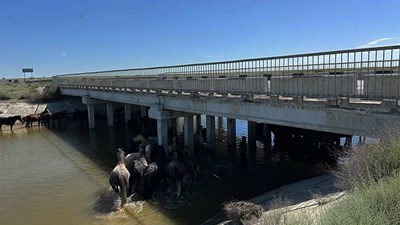Bertling's heavy-lift and technical team is an industry leader in the transportation of over-dimensional, abnormal, and heavy-lift cargoes. Our skilled heavy-lift experts and naval architects design, implement, manage, and survey tailor-made handling methods, transportation arrangements, and shipping concepts both from their home offices and in the field.
At Bertling, we believe that our capabilities are crucial to achieving our clients' goals. Our engineers and technical managers are qualified specialists with CAD skills, lifting, and HSE certification who have in-depth expertise and know the business inside out.
Bertling's heavy-lift services performed globally
The transport and movement of super-heavy cargo items is a challenging process that requires intensive collaboration between clients, suppliers, and technical, engineering, and operational divisions.
At Bertling, our clients get everything in-house. Our heavy-lift key competencies include:
- Supervision of cargo securing and handling
- Development of methodologies and procedures for the most challenging projects in difficult regions
- Feasibility studies, route, and marine surveys, as well as infrastructure evaluations in the remotest areas
- Complete and professional subcontractor selection and management
- Continuous risk assessments
Chris Wightman
Logistics Group Engineering Director
P: +44 1642 211726E: chris.wightman@bertling.com
We execute cargo moves under the most stringent requirements concerning health, safety, and the environment. These requirements apply to each office, employee, and project at Bertling, worldwide. The subcontractors we work with are assessed on the basis of the quality of their work and observance of the best HSE and ethical practices. On this basis, we strive for best industry practices together with an economy of scale for each client and project.
Bertling develops bespoke engineering solutions for all of its projects. These solutions range from the design and build of support frames, suitability evaluations of handling and transport equipment, drawings and calculations, handling methods, lashing and securing solutions, and detailed reporting.
Bertling's route and marine surveys
Bertling’s Route Survey services ensure the safe and efficient delivery of logistics project cargo to even the most challenging locations. With our in-house heavy-lift team and engineering experts, we perform detailed, end-to-end route analyses to guarantee your cargo arrives safely, on time, and ready for your project—no matter the complexity or location. Learn more about how our route survey services can simplify your logistic challenges.
WHAT IS HEAVY-LIFT shipping?
Heavy-lift, also known as project cargo transport, refers to the global transportation of big, bulky, heavy, and high-value equipment and parts intended for a given project. Heavy-lift cargo is indivisible and of weights generally accepted to be over 100 tons and widths/heights of more than 100 meters.
Found in industries such as engineering, wind power, construction, and mining, heavy-lift cargo typically includes:
- Cranes
- Storage tanks
- Wind turbines
- Agricultural machinery
- Construction machinery
- Earth moving machinery
- Boats and other vessels
- Mining equipment
To ensure safe and secure transportation for these types of cargo, heavy-lift requires in-depth expertise and intensive collaboration between involved parties.
HEAVY-LIFT VESSELS
Due to large space and low cost compared to other modes of transport, sea transport is generally the preferred mode of transport for heavy-lift cargo. Sea transport of heavy-lift cargo is typically done using heavy-lift vessels.
A heavy-lift vessel, also known as a heavy-lift carrier or heavy-lift ship, is designed to transport heavy-lift cargo.
Heavy-lift vessels include:
- Semi-submersible ships: Semi-submersible heavy-lift ships take on water ballast to allow the load — typically another vessel — to be floated over the deck. The ballast is then jettisoned, and the ship’s deck and cargo are raised above the waterline.
- Project cargo ships: Project cargo ships are non-submersible heavy-lift vessels. These ships load large and heavy cargo items with one or more on-board heavy-lift cranes and sufficient ballast to ensure stability and sea-keeping properties. Project cargo ships are used to transport a variety of cargo types, including container cranes, bridge sections, and suction piles.
- RORO ships: RORO (roll-on/roll-off) ships are cargo ships designed to carry wheeled cargo — e.g., cars, motorcycles, trucks, buses, and railroad cars — driven on and off the ship on their own wheels or using a platform vehicle.
- LOLO ships: LOLO (lift-on/lift-off) ships are cargo ships with on-board cranes to load and unload cargo. Such ships are also known as geared vessels.
As most heavy-lift cargo is unique, the management of heavy-lift ships involves careful planning and coordination to ensure that all requirements concerning cargo handling, health, safety, and the environment are met.
HOW CAN WE SUPPORT YOU?








